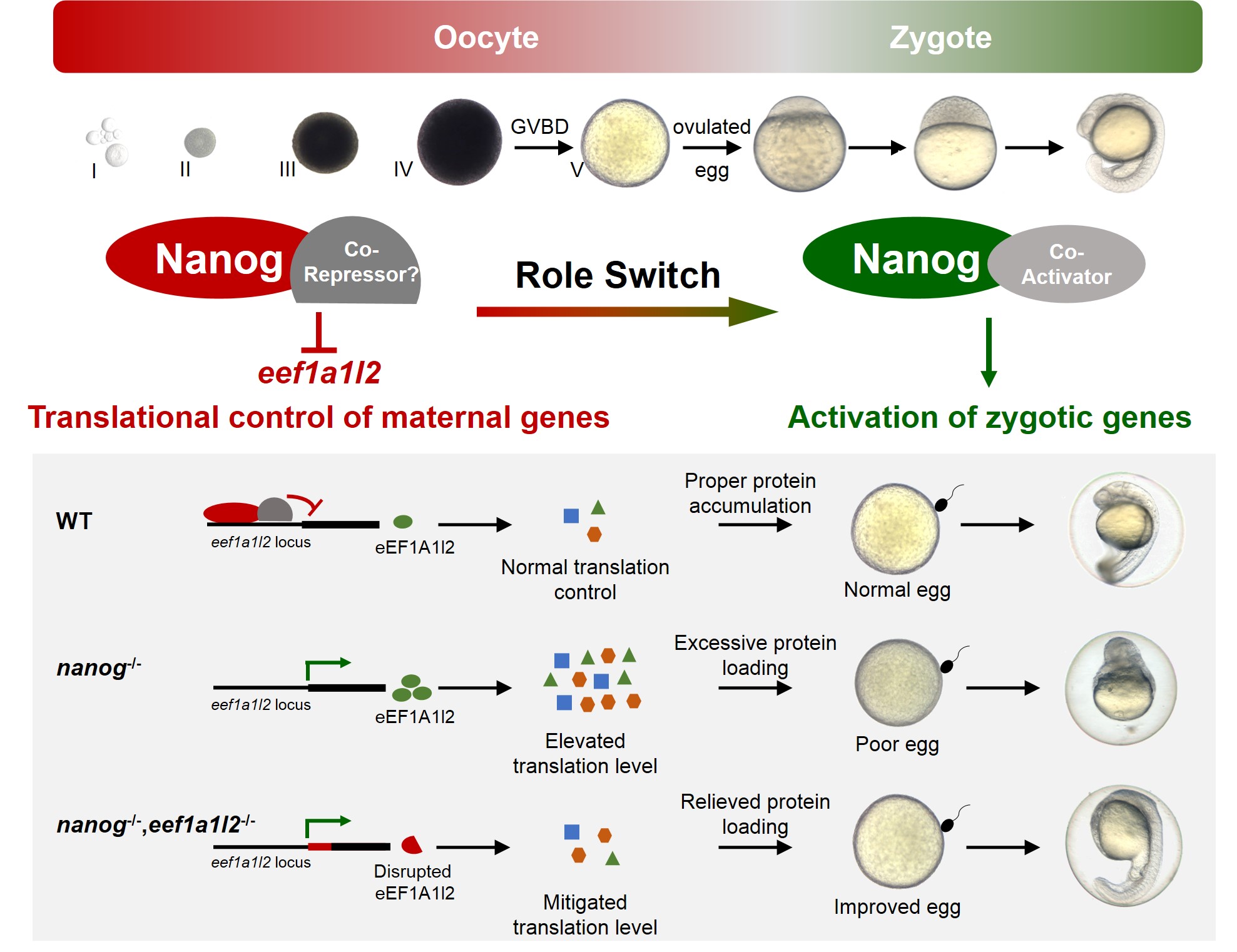
Newsroom
Researchers Reveal Novel Translational Control Mechanism of Maternal mRNAs Mediated by Nanog in Oogenesis
During oocyte development, many maternal mRNAs are translationally repressed, and maintaining translational arrest of maternal mRNA is essential for normal oocyte development and maturation. Failure of translational repression of maternal mRNAs leads to various developmental defects, including apoptosis of oocytes, impaired oocyte maturation and unsuccessful early embryonic development.
Zebrafish Nanog has been shown to be a transcriptional activator that plays a central role in regulating early embryogenesis. However, as a strongly maternally expressed gene, the role of Nanog in oogenesis is still unknown.
Recently, a research group led by Prof. SUN Yonghua from the Institute of Hydrobiology (IHB) of the Chinese Academy of Sciences demonstrated that maternal Nanog regulates oogenesis and early embryogenesis through translational control of maternal mRNA via a novel mechanism, in which Nanog acts as a transcriptional repressor to suppress transcription of eef1a1l2. This study was published in Development. The article was selected as the Research Highlight of the issue and recommended by a review article entitled “Nanog: not just a pluripotency factor”.
In this study, by combing omics and genetic methods, the researchers found that Nanog inhibits the transcription of eef1a1l2 and maintain the proper level of global translation in oocyte, ensuring appropriate amounts of proteins. Good egg quality and normal embryonic development is thus guaranteed. However, the balance of global translation is destroyed in nanog mutant oocyte. Elevated translation resulted in excessive protein loading, further leads to poor eggs and failure embryogenesis.
Amazingly, by generating the double mutant of nanog and eef1a1l2, the researchers furtherly found that depletion of eef1a1l2 in nanog mutant females effectively rescued the elevated translational activity in oocytes, oogenesis defects, and embryonic defects of nanog mutant embryos.
More interesting is, contrary to the fact that Nanog acts as transcriptional activator at early embryonic developmental stage, this study revealed that Nanog plays the role of transcriptional repressor in oogenesis, demonstrating that Nanog switches from transcriptional repressor to transcriptional activator during the oocyte-to-zygote transition.

The model of Nanog mediating translational control of maternal mRNA in oogenesis and early embryogenesis. (Image by IHB)
(Editor: MA Yun)